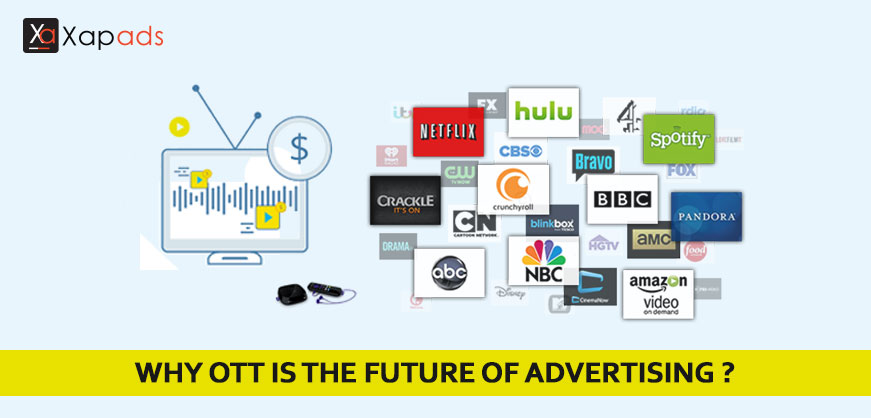Why OTT is the future of advertising

The paradigm shift of consuming content over TV is changing at a rapid pace. More and more people are switching from traditional TV broadcast to the ease of streaming content, with the introduction of OTT. OTT stands for ‘over-the-top’, the term used for the delivery of film and TV content via the internet, without requiring users to subscribe to a traditional cable or satellite d2h service.
A few examples of OTT devices include Smart TVs (such as Google TV and LG Electronics Channel Plus), gaming devices (such as Xbox One, PlayStation, and Wii U), smart set-top boxes (such as Amazon Fire Stick, Google Chromecast, and AppleTV), desktops and laptops, tablets, and smartphones (such as iPhones, Android Phones, and Windows phones) with classic example of OTT apps being Netflix, Amazon Prime, HotStar, SonyLiv, Alt Balaji etc.
Unprecedented Growth of OTT
According to the reports in just three years from 2014, monthly data usage in India has increased 15 times, as smartphones and mobile internet became cheaper and faster. In this time span, average monthly data consumption has also increased to 4Gb from 0.26GB per person which clearly shows the amount of time people are spending on the internet. With the coming in of Jio with its enormous data plans and it’s cheaper pricing changed the entire game in India. All big mobile service providers slashed their data plan prices to compete with Jio & this led to a massive increase in video consumption.
Not only movies or series but people watch live matches too online movies to matches and Star India’s video streaming service Hotstar setting a record with more than 10 million concurrent viewers logging onto the platform to watch the final match of the Indian Premier League (IPL) tournament proves it right.
Most of the Indian OTT apps are based on hybrid of AVOD (Advertisement based Video on Demand) & SVOD (Subscription based Video on Demand). They’re providing content from traditional TV on AVOD model & exclusive & premium content on SVOD model. There are even reports that Netflix is planning to move on to AVOD in some countries as a few months back it was testing video promos between episodes of shows.
Opportunities for Advertisers
Advertisers using traditional TV as advertising medium are aware of the fact that they cannot target their audience, measure the impact or track the ROI of their budget spent. Where in case of OTT, they can do all what’s missing from traditional TV advertising & that little fact is moving a big budget from TV advertising towards OTT.
OTT ads can be purchased to match the demographic or lifestyle traits of consumers. Data can be collected about which video content viewers watch, when they watch it, and the amount of time spent viewing the content.
The global market is projected to be worth $47 billion by 2023, almost double its 2018 value. China is currently leading the market for advertising on OTT, with brands expected to spend $8 billion in 2018, beating the U.S., which is set to spend $7.9 billion, according to data from consultancy World Advertising Research Center (WARC).